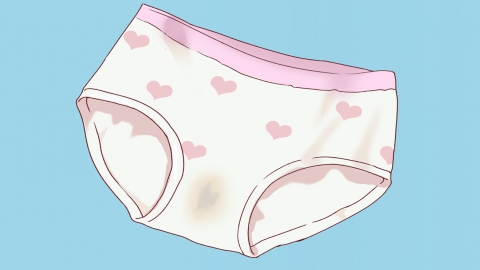What causes lower back pain and excessive vaginal discharge?
Under normal circumstances, lower back discomfort and increased vaginal discharge may be caused by physiological changes during ovulation, hormonal fluctuations before and after menstruation, pelvic inflammatory disease, uterine fibroids, uterine prolapse, or other reasons. It is recommended to seek medical attention promptly to determine the underlying cause and receive appropriate treatment under a doctor's guidance. Specific analyses are as follows:

1. Physiological changes during ovulation: During ovulation, rising estrogen levels stimulate increased cervical mucus secretion. At the same time, follicle rupture may irritate the pelvic cavity, causing mild lower back discomfort. This is a normal physiological phenomenon that does not require special treatment. It is sufficient to change underwear frequently, maintain external genital hygiene, and avoid strenuous exercise.
2. Hormonal fluctuations before and after menstruation: Changes in progesterone levels before menstruation can lead to increased vaginal discharge, while incomplete resolution of pelvic congestion after menstruation may cause lower back discomfort. Applying heat to the lower back can help relieve discomfort. Maintain a light diet, avoid raw or cold foods, get adequate rest during menstruation, and minimize strain on the lower back.
3. Pelvic inflammatory disease (PID): Infection of the pelvic organs by pathogens causes inflammation, which leads to increased and abnormal vaginal discharge. Symptoms often include lower back discomfort and lower abdominal pain. Patients should follow medical advice and may be prescribed medications such as cefixime capsules, metronidazole tablets, or levofloxacin hydrochloride capsules for treatment.
4. Uterine fibroids: Benign tumors formed by the overgrowth of uterine smooth muscle. If fibroids compress surrounding tissues or affect uterine contractions, they can cause increased vaginal discharge and lower back discomfort, possibly accompanied by menstrual irregularities. For larger fibroids, surgical removal via myomectomy may be performed to relieve symptoms.
5. Uterine prolapse: Weakening of the pelvic floor muscles causes the uterus to descend, pulling on surrounding tissues and resulting in lower back discomfort. Vaginal discharge may also increase. Mild cases can improve with pelvic floor muscle exercises (e.g., Kegel exercises). For moderate to severe cases, doctors may recommend using a pessary to support the uterus, or performing a hysterectomy via the vagina to completely resolve the issue.
In daily life, avoid prolonged sitting or standing, reduce excessive strain on the lower back, maintain regular作息 (sleep patterns), and strengthen overall physical health. Choose cotton, breathable underwear and avoid tight synthetic fabrics. Wash underwear separately to prevent cross-contamination and reduce the risk of infection.





